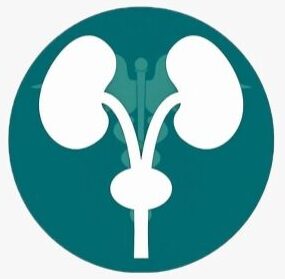Prostate cancer is a significant health concern for men worldwide. Understanding the survival rates associated with prostate cancer is essential for individuals diagnosed with this disease and their loved ones. In this article, we delve into the topic of prostate cancer survival rates, exploring key factors that influence prognosis, available treatment options, and strategies for improving outcomes. By equipping yourself with accurate and comprehensive information, you can make informed decisions regarding your health and well-being.
What are Prostate Cancer Survival Rates?
Prostate cancer survival rates refer to the percentage of people diagnosed with prostate cancer who are alive at a certain point in time following their diagnosis. These rates provide insights into the overall prognosis and outcomes associated with this disease. Survival rates are typically calculated based on five-year and ten-year periods and are often categorized by different stages and risk groups.
Understanding prostate cancer survival rates can help individuals and their healthcare providers gauge the relative effectiveness of different treatment approaches, monitor trends in outcomes, and develop appropriate management strategies. It is important to note that survival rates are statistical estimates based on large population data and may not reflect an individual’s specific circumstances.
Factors Influencing Prostate Cancer Survival Rates
The prostate cancer survival rates can vary depending on several factors. It’s crucial to consider the following factors that can influence prognosis:
Stage of cancer at diagnosis: The stage of prostate cancer, determined by factors such as tumor size, extent of spread, and involvement of nearby lymph nodes or other organs, significantly impacts survival rates. Early-stage cancers generally have higher survival rates than advanced-stage cancers.
Gleason score: The Gleason score is a grading system that assesses the aggressiveness of prostate cancer cells based on their appearance under a microscope. Higher Gleason scores indicate more aggressive cancer, which may be associated with lower survival rates.
PSA level: Prostate-specific antigen (PSA) is a protein produced by the prostate gland. Elevated PSA levels can indicate the presence of prostate cancer. Higher PSA levels at diagnosis may be associated with lower survival rates.
Age and overall health: Age and overall health play a role in determining prognosis. Younger individuals and those with better overall health tend to have higher survival rates as they may tolerate treatment more effectively and have fewer comorbidities.
Treatment response: The response to treatment, including surgery, radiation therapy, hormone therapy, and chemotherapy, can impact survival rates. The effectiveness of treatment in controlling cancer growth and managing the disease influences long-term outcomes.
Prostate Cancer Survival Rates by Stage
Prostate cancer survival rates vary by the stage at diagnosis. Here’s a general overview of survival rates based on different stages:
Localized prostate cancer: Survival rates for individuals with localized prostate cancer, where the cancer is confined to the prostate gland, are generally high. The five-year survival rate for localized prostate cancer is close to 100%, while the ten-year survival rate is around 99%.
Regional prostate cancer: Regional prostate cancer refers to cancer that has spread to nearby lymph nodes or tissues. The five-year survival rate for regional prostate cancer is approximately 100%, and the ten-year survival rate is around 99%.
Distant metastatic prostate cancer: Distant metastatic prostate cancer, where the cancer has spread to distant organs or bones, has lower survival rates compared to localized or regional prostate cancer. The five-year survival ratefor distant metastatic prostate cancer is around 30%, and the ten-year survival rate is approximately 10%.
It’s important to note that these survival rates are general estimates based on population data and may not reflect an individual’s specific circumstances. Factors such as age, overall health, response to treatment, and other individual characteristics can significantly impact an individual’s prognosis.
Treatment Options and Their Impact on Survival Rates
The choice of treatment for prostate cancer can significantly affect survival rates. Common treatment options for prostate cancer include:
Active surveillance: In cases where the cancer is slow-growing and low-risk, active surveillance may be recommended. This approach involves monitoring the cancer closely with regular check-ups, PSA tests, and biopsies. The goal is to delay or avoid active treatment while ensuring timely intervention if the cancer shows signs of progression.
Surgery: Surgical removal of the prostate gland, known as radical prostatectomy, is a common treatment option for localized prostate cancer. The success of surgery in achieving complete cancer removal can contribute to higher survival rates.
Radiation therapy: Radiation therapy uses high-energy beams to kill cancer cells. It can be delivered externally or internally (brachytherapy) to target the prostate. Radiation therapy may be used as a primary treatment for localized prostate cancer or as adjuvant therapy following surgery.
Hormone therapy: Hormone therapy aims to lower the levels of male hormones, such as testosterone, to slow down the growth of prostate cancer cells. It is often used in advanced or metastatic prostate cancer to manage the disease and prolong survival.
Chemotherapy: Chemotherapy involves the use of drugs to kill cancer cells throughout the body. It is typically used in advanced or metastatic prostate cancer when the cancer is no longer responsive to hormone therapy.
Targeted therapy: Targeted therapies specifically target cancer cells based on their unique characteristics. These therapies work by interfering with specific molecules involved in cancer growth and progression. They are often used in advanced prostate cancer when other treatments have been ineffective.
The choice of treatment depends on various factors, including the stage and aggressiveness of the cancer, overall health, and individual preferences. Discussing treatment options with healthcare professionals can help determine the most appropriate approach for each individual.
Strategies for Improving Prostate Cancer Survival Rates
While prostate cancer survival rates provide a general understanding of prognosis, it’s important to focus on strategies that can potentially improve outcomes for individuals diagnosed with prostate cancer. Here are some key strategies:
Early detection: Regular prostate cancer screenings, including prostate-specific antigen (PSA) tests and digital rectal exams, can facilitate early detection. Early diagnosis allows for timely intervention and potentially better treatment outcomes.
Seeking expert medical care: Consulting with healthcare professionals who specialize in prostate cancer can ensure appropriate diagnosis, treatment planning, and ongoing monitoring. Specialized care can optimize treatment strategies and support comprehensive cancer management.
Adhering to treatment plans: Following prescribed treatment plans, including surgery, radiation therapy, hormone therapy, or chemotherapy, as recommended by healthcare professionals, is crucial for maximizing treatment effectiveness and potential survival benefits.
Lifestyle modifications: Adopting a healthy lifestyle can have a positive impact on overall well-being and potentially improve treatment outcomes. This includes maintaining a balanced diet, engaging in regular physical activity, managing stress, and avoiding tobacco and excessive alcohol consumption.
Support and communication: Seeking emotional support from family, friends, support groups, or mental health professionals can be beneficial in coping with the challenges of prostate cancer. Effective communication with healthcare providers can foster a collaborative approach to treatment and decision-making.
Conclusion: Prostate Cancer Survival Rates
Prostate cancer survival rates provide valuable insights into the overall prognosis and outcomes associated with this disease. Understanding the factors that influence survival rates, such as stage at diagnosis, Gleason score, PSAlevel, age, and treatment response, can help individuals make informed decisions about their healthcare journey. It’s important to remember that survival rates are statistical estimates based on population data and may not accurately reflect an individual’s specific circumstances. Factors such as overall health, treatment adherence, and lifestyle modifications can play a significant role in improving outcomes.
By staying informed, seeking expert medical care, and adopting healthy lifestyle practices, individuals diagnosed with prostate cancer can enhance their chances of better treatment outcomes and overall survival. Regular screenings, open communication with healthcare professionals, and access to support networks are vital components of comprehensive prostate cancer management.
FAQs: Prostate Cancer Survival Rates
Are survival rates for prostate cancer improving over time?
Yes, prostate cancer survival rates have shown improvement over the years, thanks to advances in early detection, treatment options, and supportive care. Regular screenings and timely intervention contribute to better outcomes and improved survival rates.
Can lifestyle modifications and healthy habits impact prostate cancer survival rates?
While lifestyle modifications cannot guarantee specific outcomes, adopting a healthy lifestyle can positively impact overall well-being and potentially improve treatment outcomes. Healthy habits such as a balanced diet, regular exercise, stress management, and avoiding tobacco and excessive alcohol consumption can contribute to overall health and well-being during prostate cancer treatment.
Do survival rates vary based on the type of treatment chosen?
Yes, the choice of treatment can influence prostate cancer survival rates. Each treatment option, whether surgery, radiation therapy, hormone therapy, or targeted therapy, has its own set of potential benefits and risks. Consulting with healthcare professionals can help determine the most suitable treatment approach based on individual factors, such as cancer stage, overall health, and treatment goals.
Are there support groups available for individuals with prostate cancer?
Yes, there are support groups available for individuals diagnosed with prostate cancer. These groups provide a platform for sharing experiences, obtaining emotional support, and accessing valuable information. Support groups can be in-person or online, connecting individuals with others who are going through similar experiences.
How often should I have prostate cancer screenings?
The frequency of prostate cancer screenings, such as PSA tests and digital rectal exams, may vary depending on individual risk factors and healthcare provider recommendations. It is important to discuss the appropriate screening schedule with a healthcare professional to ensure timely detection and intervention if necessary.




